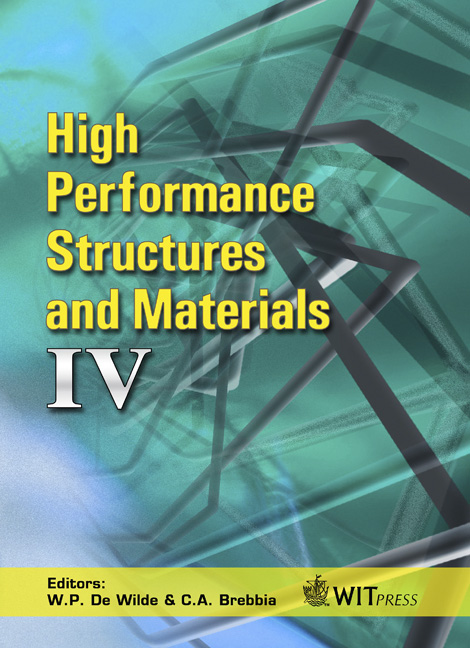Probabilistic Design Of FRP Strengthening Of Concrete Structures
Price
Free (open access)
Transaction
Volume
97
Pages
9
Page Range
481 - 489
Published
2008
Size
308 kb
Paper DOI
10.2495/HPSM080491
Copyright
WIT Press
Author(s)
A. Carolin & B. Täljsten
Abstract
For a long period of time CFRP plate bonding has been shown to be a competitive method for shear strengthening, both in regards to structural performance and economical aspects. A handful of models for design that include different strengthening aspects exist. Most proposals are derived from assumptions made for the design of new structures and are also based on a deterministic approach where in the best cases a safety factor is added. The use of probabilistic methods is extending and reliability of a designed structure is sometimes calculated. This paper presents how the reliability should be used in the design for strengthening an existing structure, which issues should be considered and also what safety one can expect from a structure strengthened in shear. Partial coefficients on material properties and loads are used to give a uniform treatment of the risk of failure. When partial coefficients are chosen, the reason for strengthening and the strengthening method may be considered to achieve an optimal strengthening with respect to structural safety and economy. The results from the analysis indicate design models for shear strengthening should be analytically determined with a transparent strategy for the uniform treatment of reliability aspects. Keywords: shear strengthening, concrete structures, probabilistic design, frp, risk management, Monte Carlo simulations. 1 Introduction All around us there are concrete structures intended for transportation or living. When such structures are built today, they are designed in accordance with codes that in many cases, EN [1], have their basis in probabilistic knowledge. Existing
Keywords
shear strengthening, concrete structures, probabilistic design, frp, risk management, Monte Carlo simulations.





